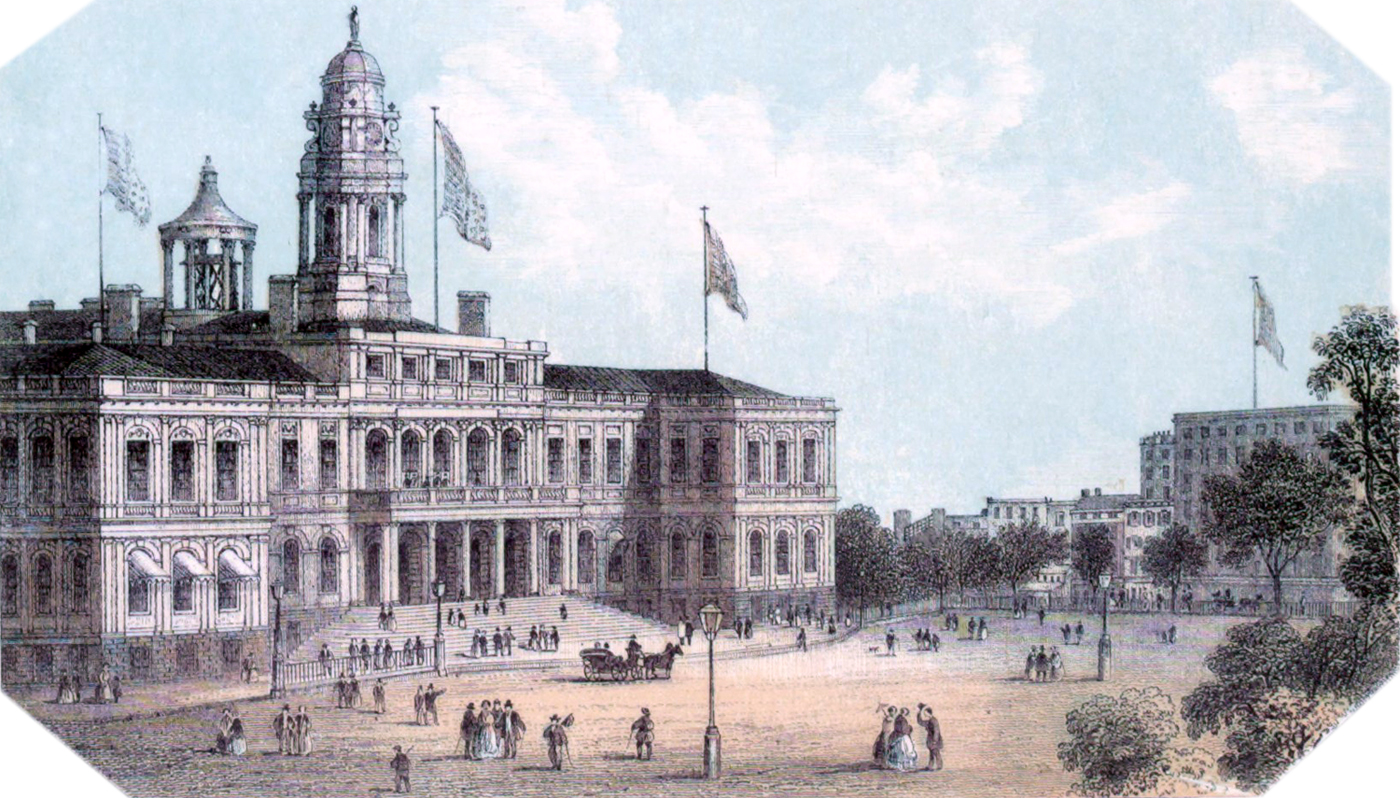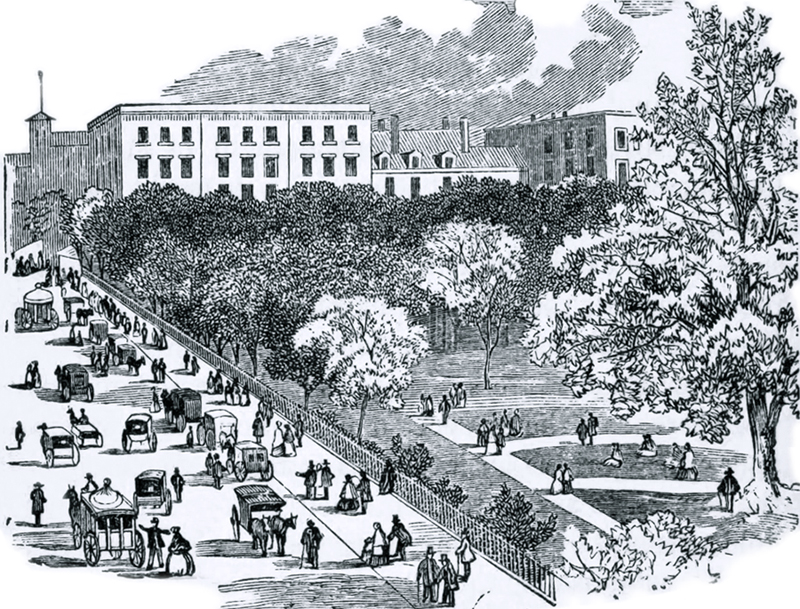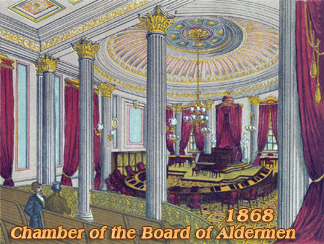Text about the
City Hall from Nelson's Guide:
«The Park has an area of 11 acres, and is adorned in its
south part by a magnificent fountain, the basin of which has the large diameter
of 100 feet. The play of water from this fountain is exceedingly fine. »
«Here ["The Park"] are several buildings of a public character, the most important of which is the City Hall. It is a structure of very grand and imposing effect, its spacious front and ends being built of marble — although a regard to economy prevented the same costly material being employed for the back, which is constructed of free-stone. A curious miscalculation led to the adoption of this cheaper material — the supposition, namely, that the city would never extend to the north of this building, (which was at that time the northern extremity of the city, making New York only half a mile in length) and that consequently the back part of the building would be very little observed. How far this modest vaticination has been falsified may be gathered from the fact, that now this building has six times more houses to the north of it than it has to the south — the extent of the city in that direction being upwards of three miles from the Hall.
Our space does not permit us to enter into a minute description of this fine edifice ; a few particulars, however, may be set down. Its dimensions are 216 feet in length, 105 in width, with an elevation of 51 feet. It has four entrances — one in front and one in the rear, besides one in each of the ends. A flight of six marble steps, surmounted by a sixteen-columned portico, conducts to the entrance in front. There are two storeys and an attic storey in the centre of the building, overtopped by a cupola. The orders of architecture vary — the first storey being Ionic, the second Corinthian, the attic of the fancy, and the cupola of the composite order. The Governor's Room is a spacious apartment 52 feet in length, and richly adorned with some of the best specimens of art in the States ; especially are to be seen admirable portraits of the leading men in American history. The names of Sully, Jarvis, Stewart, Page, &c., as among the painters of these, give sufficient assurance of the quality of the works.
We must not omit to mention the Hall of Common Council, a very beautiful apartment, with its interesting relic, the chair which was occupied by Washington when President of the first Congress. There is also the Hall of the Assistant Aldermen, richly furnished and also embellished with costly paintings.
Altogether the City Hall is one of the most noteworthy objects in New York, and it seems worse than superfluous to commend it to the notice of the stranger. To every person of taste and intelligence it must prove an object of early regard and deep interest, both from its own intrinsic attractions and the historic associations connected with it. It was commenced in 1803, and completed in 1812, at an expense, exclusive of furniture, of half a million of dollars. Its architect was J. M'Comb, jun., who died at an advanced age, in 1853. A peculiar arrangement in connection with this building may be noticed, as illustrative of a not very pleasant characteristic of New York, the frequency of fires, that a watchman is stationed in the upper part of the cupola, whose office is to give alarm of fire by ringing a huge bell fixed in a small cupola at the hinder part of the building. The number of strokes of the bell indicates the part of the city where the fire has taken place [the City Hall itself was partially destroyed by fire that same year, 1858]. Possibly the remembrance of some such brazen monitor as this may have helped the inspiration of that great though wayward genius, E. A. Poe, in his marvellous poem of " The Bells."
Situated also in the Park, are to be seen, the Hall of Records, the Rotunda, &c.»





